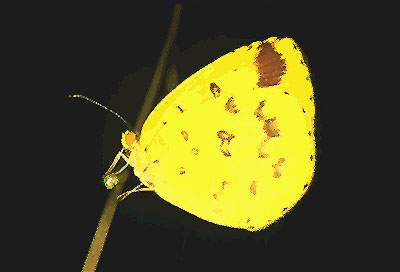
Order
LEPIDOPTERA(Greek, lepid = scale; pteron = wing)Common Names
moths and butterflies
Description
Most moths and butterflies within the Order Lepidoptera are recognised by the characteristic coiled proboscis used for nectar feeding. They also have two pairs of wings that are often brilliantly coloured or have spectacular patterns or shapes. The colours are produced by minute scales which cover the wing surface. At rest, moths usually carry their wings spread flat or held together to resemble the sloping sides of a house roof; butterflies usually carry their wings held flat together over the body. Butterflies are more active during the day while moths are more active from dusk and onwards into the night hours. The antennae are smooth and terminate in small clubs in all butterflies, while in moths, the antennae are usually comb or brush-like. They have large compound eyes and simple eyes (ocelli) are frequently present.
Life Cycle
The life cycle always involves metamorphosis from egg to larva (caterpillar) to pupa and finally adult insect. The pupa or chrysalis may be protected by a cocoon of silk threads or be naked and simply suspended from a leaf or stem.
Members
The life cycle always involves metamorphosis from egg to larva (caterpillar) to pupa and finally adult insect. The pupa or chrysalis may be protected by a cocoon of silk threads or be naked and simply suspended from a leaf or stem.
Food
Living plant tissue is most commonly eaten by most caterpillars. However, some species are predators and still others are scavengers on such materials as wool. Adults are mostly nectar feeding but will also take honeydew or sap.Importance
Both moths and butterflies are extremely important as pollinators, and they also form a very useful part of the food chains of insectivores (spiders, birds, geckoes, etc.). Various species are extremely important pests and cause large amounts of damage to various crops: bananas, cacao (cocoa), citrus, coconut, coffee, maize, potato, rice, sugar cane and tomato.




